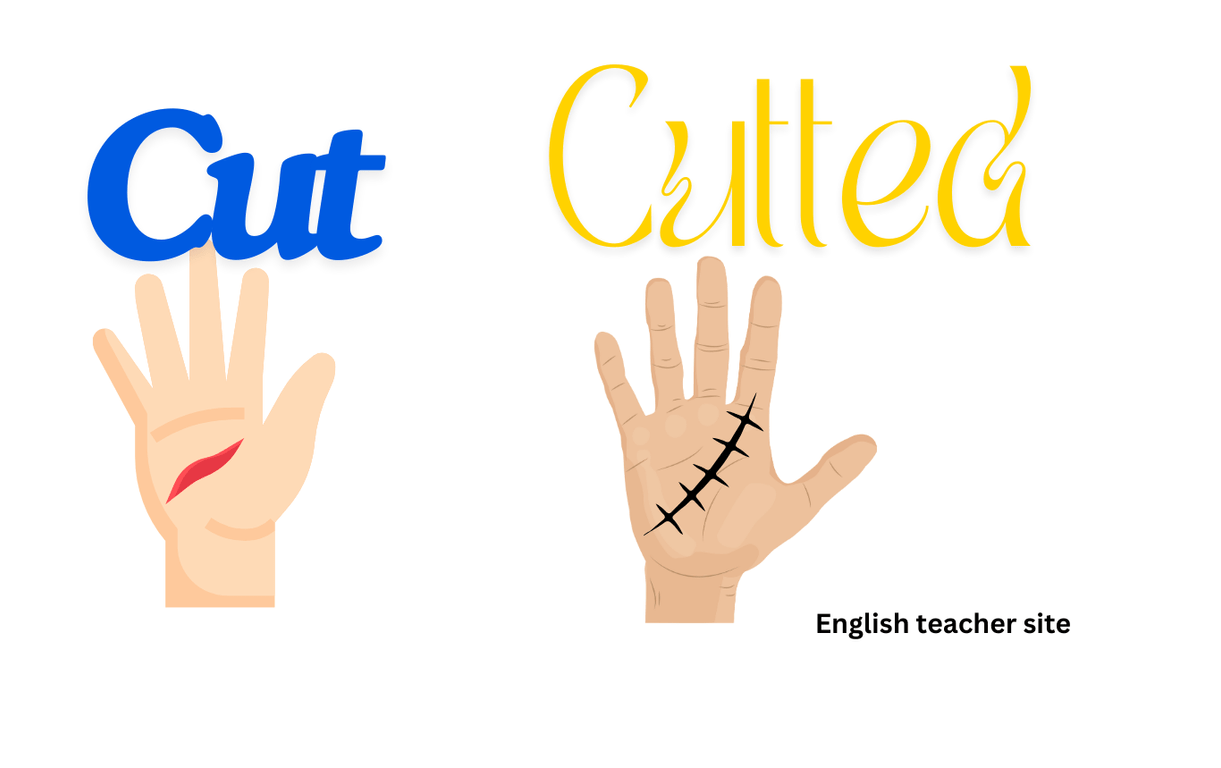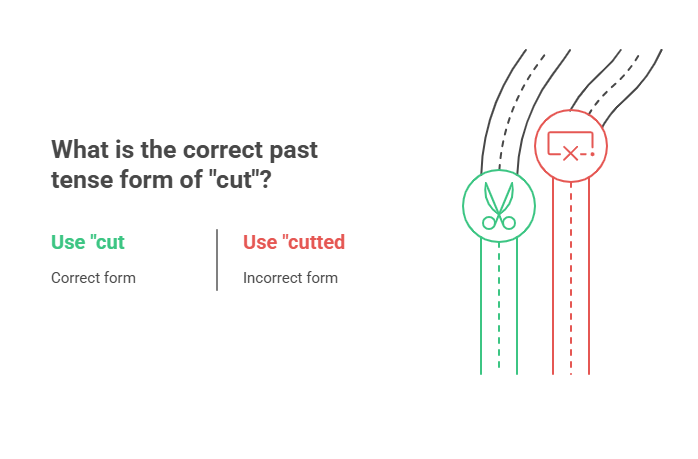Past Tense of Cut: Is It Cut or Cutted? Find Out Here

The confusion surrounding the past tense of cut
The past tense of “cut” causes confusion for many English learners and native speakers alike. The issue arises when people mistakenly use “cutted” instead of “cut,” thinking the word follows the same pattern as regular verbs. This confusion is understandable since English has a myriad of rules when it comes to verb tenses, and many verbs do follow the expected “-ed” suffix for the past tense. However, “cut” defies this rule and is an example of an irregular verb, a category that does not follow conventional conjugation patterns. The primary goal of this article is to clear up this confusion once and for all, by explaining the correct form and how to use it effectively in both written and spoken English.
The Basics of Verb Tenses in English
Regular vs. irregular verbs: What sets them apart
The distinction between regular and irregular verbs lies in how their past tense forms are constructed. Regular verbs form their past tense by adding “-ed” to the root verb, as in “play” becoming “played” or “work” becoming “worked.” Irregular verbs, on the other hand, do not follow this predictable pattern. Instead, they change form entirely, sometimes in subtle ways, as seen with verbs like “go” (which becomes “went”) or “see” (which becomes “saw”).
Irregular verbs are often derived from older linguistic structures, and many have been carried over from languages like Old English, Latin, and Greek. These irregular forms are ingrained in the language, and understanding them is critical to achieving fluency in English.
The Past Tense of Cut: Cut or Cutted?
Explanation of the past tense of cut
The past tense of “cut” is simply “cut.” Despite what might seem like an expectation to add “-ed,” “cut” remains unchanged in both its present and past tense forms. This can be perplexing at first, but it’s an important feature of English’s irregular verb system. Other verbs follow a similar pattern, such as “put,” which also does not change in the past tense (“put” in the present and “put” in the past).
This irregular form is a holdover from the evolution of the English language, where many verbs underwent alterations that simplified their conjugation. While many modern English speakers might expect to add “-ed” to the verb “cut” to indicate the past, the language has long since adopted the unaltered form as the accepted usage.

Examples of correct usage in sentences
In both present and past contexts, the word “cut” remains unchanged. Consider the following examples:
- Present tense: “I cut the paper with scissors.”
- Past tense: “I cut the paper yesterday.”
In both cases, “cut” is used, and the surrounding context clarifies whether the action is happening in the present or has already occurred.
Common Mistakes with the Past Tense of Cut
The incorrect use of cutted and why it’s wrong
A common mistake people make is using “cutted” as the past tense of “cut.” However, “cutted” is not grammatically correct. English speakers should avoid using this form, as it does not conform to the rules for irregular verbs. When speaking or writing, the past tense of “cut” should always be “cut,” not “cutted.”
How to correct these mistakes in writing and conversation
To avoid using “cutted,” it’s important to remember that “cut” stays the same in both present and past tenses. Practicing correct verb forms through reading, writing, and speaking exercises can help internalize the proper usage. Additionally, reviewing grammar rules and engaging in language learning platforms that emphasize irregular verb forms will reinforce the habit of using “cut” correctly in both spoken and written communication.
When to Use Cut in the Past Tense
Real-life examples of how cut is used in the past tense
In everyday conversation, you’ll often hear “cut” used to refer to actions completed in the past. Whether it’s talking about a specific task or describing an event, the context helps to differentiate between present and past actions. Here are some scenarios where “cut” would be used correctly:
- Describing an action completed: “She cut the vegetables for the stew.”
- Referring to something that happened earlier: “I cut my finger while cooking.”
Identifying situations where cut works as both present and past tense
Since “cut” is the same in both tenses, it’s important to rely on context to determine whether the action is happening now or has already taken place. In the present tense, it indicates an ongoing or current action, while in the past tense, it reflects something that has been completed. It’s the surrounding words and structure of the sentence that reveal which tense is being used.
Tips for Mastering Irregular Verb Forms
How to remember irregular verbs like cut
Memorizing irregular verbs like “cut” can be tricky, but there are strategies to make it easier. One effective way is to create flashcards with the base form and past tense form on opposite sides. Repeated exposure to these forms through reading and writing exercises also helps cement them in memory.
Strategies for learning and practicing verb tenses
To practice irregular verbs, try using them in both written and spoken exercises. Engaging in conversations with native speakers or participating in language exchange programs can help you reinforce proper usage. Additionally, reading books, articles, and watching movies or videos in English allows for natural exposure to verb forms in context.
Final Thoughts on the Past Tense of Cut
The past tense of “cut” is “cut.” This irregular verb follows the pattern of many other verbs in English that do not change form in the past tense. Understanding this will help you avoid common mistakes and improve your overall command of the English language.
Closing thoughts on the importance of grammar accuracy in communication
Grammatical accuracy is vital for clear communication. Understanding irregular verbs and using them correctly not only boosts your language skills but also enhances your credibility and confidence when speaking or writing in English.
Source
Harper, Douglas. “Etymology of cut.” Online Etymology Dictionary
My name is Khamis Maiouf. I am the creator of the English Teacher Site, dedicated to providing valuable resources and insights for students around the world. With a passion for education and a commitment to helping students enhance their skills, I aim to make English teaching more effective and enjoyable for both educators and students.






